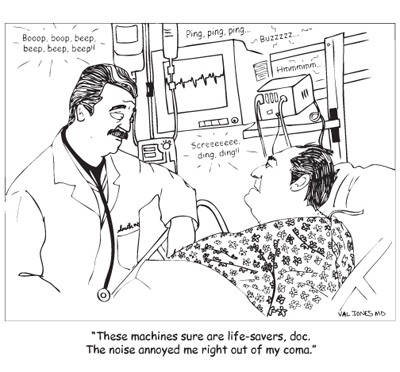June 3rd, 2010 by Steve Novella, M.D. in Better Health Network, Opinion, Quackery Exposed, Research
No Comments »

The development of drugs and other treatments for specific symptoms or conditions relies heavily on either serendipity (the chance finding of a beneficial effect) or on an understanding of underlying mechanisms.
In pain, for example, there are limited ways in which we can block pain signals –- such as activating opiate receptors, or inhibiting prostaglandins. There are only so many ways in which you can interact with these systems. The discovery of a novel mechanism of modulating pain is therefore most welcome, and has the potential of leading to entirely new treatments that may have a better side effect profile than existing treatments and also have an additive clinical effect.
A recent study by Nana Goldman et. al., published in Nature Neuroscience, adds to our understanding of pain relief by identifying the role of adenosine in reducing pain activity in the peripheral nervous system. The researchers, in a nice series of experiments, demonstrated that producing a local painful stimulus in mice causes the local release of ATP (adenosine triphosphate) that peaks at about 30 minutes. This correlates with a decreased pain response in the mice. Further, if drugs are given that prolong the effect of adenosine, the analgesic effect itself is prolonged. Read more »
*This blog post was originally published at Science-Based Medicine*
August 2nd, 2009 by Medgadget in Better Health Network, News
No Comments »


Researchers at University of Rochester Medical Center injected mice that had spinal cord injury with a derivative of food coloring Blue Number One. The Brilliant Blue G (BBG) dye, which helps control the activity of ATP by blocking its activation of P2X7 receptors, was shown to help repair the injured spinal cords when treated animals even started moving their previously paralyzed limbs. Interestingly, it was recently discovered that excessive release of ATP, a compound typically known as a biological power source, augments tissue injury by activating these high-affinity P2X7 receptors.
University of Rochester explains:

“While we achieved great results when oxidized ATP was injected directly into the spinal cord, this method would not be practical for use with spinal cord-injured patients,” said lead researcher Maiken Nedergaard, M.D., D.M.Sc., professor of Neurosurgery and director of the Center for Translational Neuromedicine at the University of Rochester Medical Center. “First, no one wants to put a needle into a spinal cord that has just been severely injured, so we knew we needed to find another way to quickly deliver an agent that would stop ATP from killing healthy motor neurons. Second, the compound we initially used, oxidized ATP, cannot be injected into the bloodstream because of its dangerous side effects.”
Neurons in the spinal cord are so susceptible to ATP because of a molecule known as “the death receptor.” Scientists know that the receptor – called P2X7 – plays a role in regulating the deaths of immune cells such as macrophages, but in 2004, Nedergaard’s team discovered that P2X7 also is carried in abundance by neurons in the spinal cord. P2X7 allows ATP to latch onto motor neurons and send them the flood of signals that cause their deaths, worsening the spinal cord injury and resulting paralysis.
So the team set its sights on finding a compound that not only would prevent ATP from attaching to P2X7, but could be delivered intravenously. In a fluke, Nedergaard discovered that BBG, a known P2X7R antagonist, is both structurally and functionally equivalent to the commonly used FD&C blue dye No. 1. Approved by the Food and Drug Administration as a food additive in 1982, more than 1 million pounds of this dye are consumed yearly in the U.S.; each day, the average American ingests 16 mgs. of FD&C blue dye No. 1.
“Because BBG is so similar to this commonly used blue food dye, we felt that if it had the same potency in stopping the secondary injury as oxidized ATP, but with none of its side effects, then it might be great potential treatment for cord injury,” Nedergaard said.
The team was not disappointed. An intravenous injection of BBG proved to significantly reduce secondary injury in spinal cord-injured rats, who improved to the point of being able to walk, though with a limp. Rats that had not received the BBG solution never regained the ability to walk. There was one side effect: Rats who were injected with BBG temporarily had a blue tinge to their skin.
More from National Geographic…
Abstract in PNAS: Systemic administration of an antagonist of the ATP-sensitive receptor P2X7 improves recovery after spinal cord injury
Press release: Common Food Dye May Hold Promise in Treating Spinal Cord Injury
*This blog post was originally published at Medgadget*














